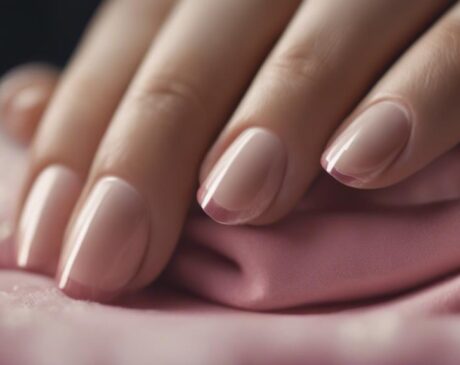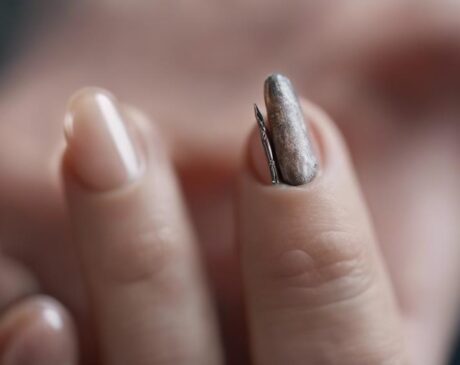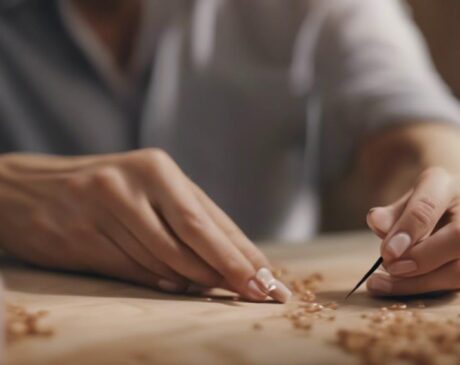Why Wont My Press on Nails Stick?
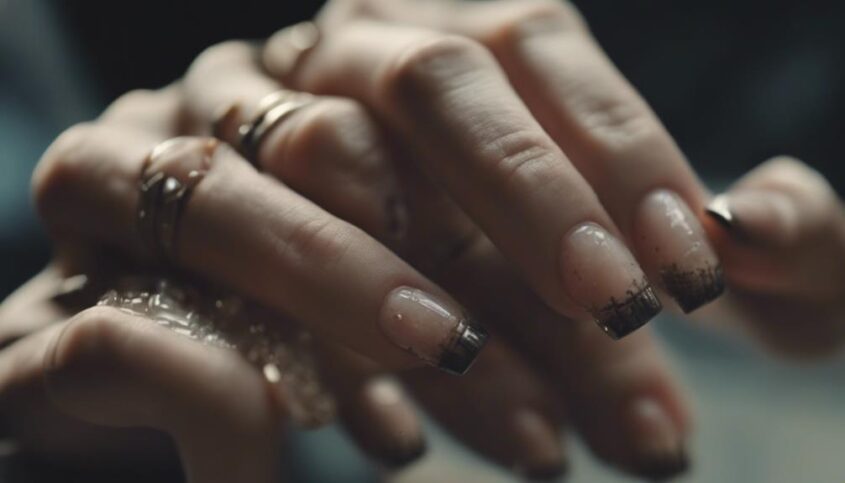
Press-on nails might not stick due to improper nail preparation, low-quality adhesive, wrong nail sizing, oily nail beds, or rushed application. Addressing these factors can improve adherence. For example, ensuring nails are dry, clean, and properly sized enhances the longevity of press-on nails. Using high-quality adhesive and taking time for application can also boost stickiness. Understanding the impact of nail shape compatibility and the importance of topcoat usage are essential for successful press-on nail application. Further insights on nail care can help optimize adhesion and nail longevity.
Key Takeaways
- Improper nail preparation affects adhesion.
- Low-quality adhesive compromises longevity.
- Incorrect nail size hinders adhesion.
- Oily nail beds reduce bonding effectiveness.
- Rushed application leads to poor adhesion.
Improper Nail Preparation
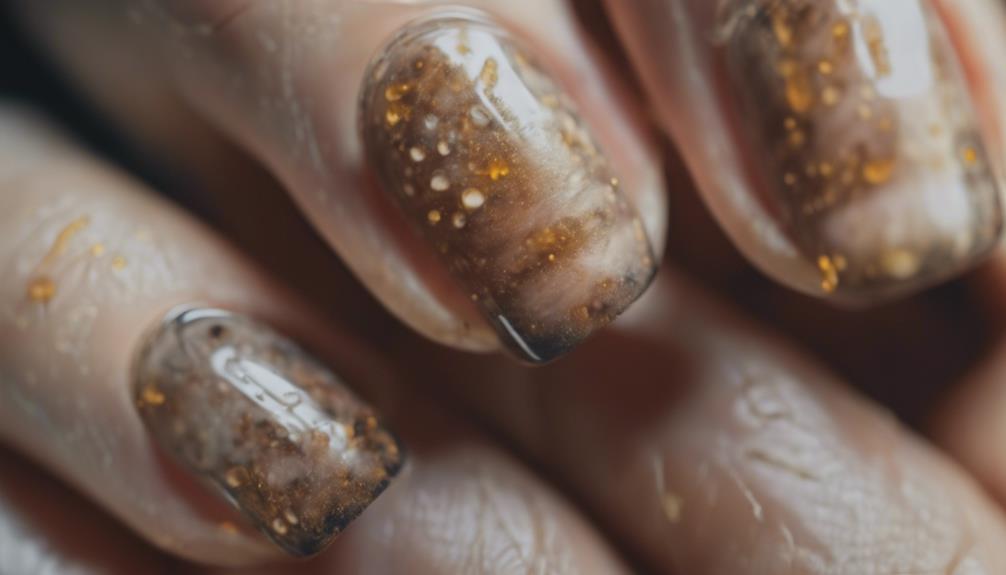
Improper nail preparation significantly impacts the adhesion of press-on nails, leading to potential issues with longevity and durability. Proper nail filing is essential to create a smooth surface for press-on nails to adhere to effectively. When nails are not filed correctly, uneven surfaces can hinder the bond between the natural nail and the press-on nail, causing them to lift prematurely.
Additionally, nail dehydration, often overlooked, can result in a lack of moisture that is crucial for the adhesive to bond correctly. Dehydrated nails are more prone to peeling and breaking, making it challenging for press-on nails to stay in place.
To ensure optimal adhesion and longevity of press-on nails, it is imperative to prioritize proper nail preparation techniques. By meticulously filing the nails to create a smooth canvas and maintaining nail hydration, individuals can enhance the durability of their press-on nails. These simple yet crucial steps in nail preparation can make a significant difference in the overall performance and longevity of press-on nails.
Low-Quality Adhesive
When selecting press-on nails, the quality of the adhesive plays a crucial role in determining their longevity and effectiveness. The adhesive application process is essential for ensuring a strong bond between the press-on nails and natural nails. Low-quality adhesives often result in a lack of adherence, leading to nails that won't stick properly or stay in place. One common issue with low-quality adhesive is extended drying time, which can be frustrating for individuals looking for a quick and convenient nail solution.
Moreover, the roughness level of the nail surface can also impact the effectiveness of the adhesive. Low-quality adhesives may struggle to adhere to smooth nail surfaces, causing the press-on nails to lift or fall off prematurely. To overcome this challenge, it is crucial to choose adhesives that are designed to work effectively on various nail surfaces, regardless of their roughness level. By opting for high-quality adhesives with quick drying times and strong bonding capabilities, individuals can ensure that their press-on nails stay in place for an extended period without any issues.
Incorrect Nail Size

When it comes to press-on nails, one crucial factor that can affect their adhesion is the correct nail size. Using nails that are too big or too small can prevent them from sticking properly.
Proper nail sizing ensures a better fit, allowing the adhesive to bond effectively and increasing the longevity of the press-on nails.
Proper Nail Sizing
Ensuring the correct sizing of press-on nails is essential for their proper adhesion and longevity. Proper application of press-on nails involves selecting sizes that fit each nail precisely. When nails are too small or too large, they are more likely to lift or fall off.
To maintain the integrity of press-on nails, regular nail maintenance is crucial. This includes keeping the nails dry to prevent lifting and applying gentle pressure when pressing them onto the nail bed. Incorrectly sized nails can lead to discomfort and reduced wear-time.
Nail Adhesive Selection
Properly sized press-on nails play a vital role in ensuring the effectiveness of selected nail adhesives. When choosing a nail adhesive, consider factors such as adhesive shelf life, application techniques, nail type compatibility, and removal methods.
Adhesive shelf life refers to the duration in which the adhesive remains effective for use. Application techniques are crucial for optimal adhesion and longevity of the press-on nails. Ensure the adhesive is compatible with the type of nails you are using to prevent any issues with adherence.
Additionally, understanding the proper removal methods can help avoid damage to your natural nails. By carefully selecting the right adhesive and following recommended application and removal practices, you can enhance the longevity and durability of your press-on nails.
Surface Preparation Importance
To ensure the effectiveness of press-on nails, one crucial aspect to consider is the proper sizing of the nails in relation to the nail bed. Incorrectly sized nails can lead to lifting and premature detachment. In addition to nail size, surface cleaning and nail shape play a vital role in the longevity of press-on nails. A clean and dry nail surface free of oils and residue ensures better adhesion. The shape of the natural nail can also impact how well press-on nails adhere. Moreover, the quality of the adhesive used and the importance of applying a topcoat for added protection and durability cannot be overstated. Below is a table summarizing the key points:
| Surface Preparation | Adhesive Quality | Topcoat Importance |
|---|---|---|
| Surface cleaning | High-quality adhesive | Protects and prolongs the press-on nails |
Oily Nail Beds

Oily nail beds can hinder the adhesive properties of press-on nails due to the excess sebum on the nails.
To improve adhesion, it is essential to thoroughly cleanse the nails before applying press-on nails.
Excess Sebum Affects Adhesion
With the presence of excess sebum on nail beds, achieving optimal adhesion for press-on nails can be a challenging task. Sebum control plays a crucial role in addressing this issue.
Excess sebum, a natural oil produced by the skin, can create a barrier that hinders the adhesive from bonding effectively with the nail surface. To improve adhesion troubleshooting in such cases, it's recommended to prep the nails properly by using a gentle nail cleanser or alcohol-based solution to remove any excess oil.
This step helps in creating a clean and dry surface for the press-on nails to adhere to, enhancing their longevity and ensuring a secure fit. By managing sebum levels and following effective preparation techniques, individuals can overcome adhesion challenges caused by oily nail beds.
Cleanse Nails Before Applying
When addressing the challenge of press-on nails not sticking due to excess sebum on nail beds, a crucial step is to cleanse the nails thoroughly before applying the adhesive. Pre-application hygiene is essential for optimal adhesion.
Start by using a nail buffer to gently exfoliate the nail surface, removing any residue or oils. Additionally, pay attention to cuticle care to ensure a smooth application surface.
Before applying the press-on nails, prep the nails with an alcohol swab to remove any remaining oils or debris that could interfere with adhesion. By following these steps diligently, you can create a clean and ideal canvas for the press-on nails to adhere to, promoting longer wear and a flawless finish.
Short Application Time
A brief application time may lead to press-on nails not adhering properly and falling off sooner than expected. To ensure long-lasting wear, it is crucial to avoid rushed application processes that may result in frequent reapplication. While quick removal might seem convenient, it is essential to allocate sufficient time for the initial application to guarantee a secure bond between the nail and the press-on. Rushing through the application can lead to air bubbles trapped beneath the press-on, causing premature detachment.
Innovative nail enthusiasts understand that taking the time for a meticulous application can significantly impact the longevity of press-on nails. By carefully following the application instructions and allowing for proper drying and bonding time, individuals can enjoy extended wear without the need for constant touch-ups. Remember, a rushed application may seem time-efficient initially, but it often results in the inconvenience of having to reapply the press-on nails more frequently. Prioritizing a thorough and patient approach during application can lead to a more satisfying and durable nail enhancement experience.
Excessive Hand Washing

Insufficient drying time due to excessive hand washing can compromise the adherence of press-on nails, leading to premature detachment and the need for frequent reapplication. For individuals with skin sensitivity, frequent exposure to water and soap can weaken the bond between the nail and the adhesive. This repeated cycle of wetting and drying can strip the natural oils from the nail bed, making it difficult for press-on nails to stay in place.
To combat the effects of excessive hand washing on press-on nails, consider applying a nail primer before attaching the press-ons. Nail primers help create a stronger bond between the natural nail and the adhesive, improving the longevity of the press-ons. Additionally, using a high-quality nail adhesive specifically designed for press-on nails can provide better resilience against the challenges posed by frequent hand washing.
Innovations in nail adhesive technology continue to address the issue of adherence in the face of excessive hand washing, offering solutions that cater to the needs of individuals who prioritize both nail aesthetics and hand hygiene.
Incompatible Nail Shapes
Experiencing challenges with press-on nails' adherence can often be attributed to the use of incompatible nail shapes. Different nail shapes, such as square, round, almond, coffin, or stiletto, require specific considerations when applying press-on nails. Proper filing techniques play a crucial role in ensuring that the press-on nails adhere effectively to the natural nail bed.
When dealing with various nail shapes, it is essential to file the natural nails according to the shape of the press-on nails being applied. For instance, if you have natural nails with a square shape but want to apply almond-shaped press-on nails, filing the edges to create a more tapered look can help the press-ons adhere better.
Moreover, understanding the curvature and width of your natural nails in comparison to the press-on nails can also impact how well they stick. By filing the natural nails to match the press-ons' shape and size, you create a smoother surface for better adhesion. Proper filing techniques tailored to your nail shape can significantly improve the longevity and adherence of press-on nails.
Lack of Topcoat Usage
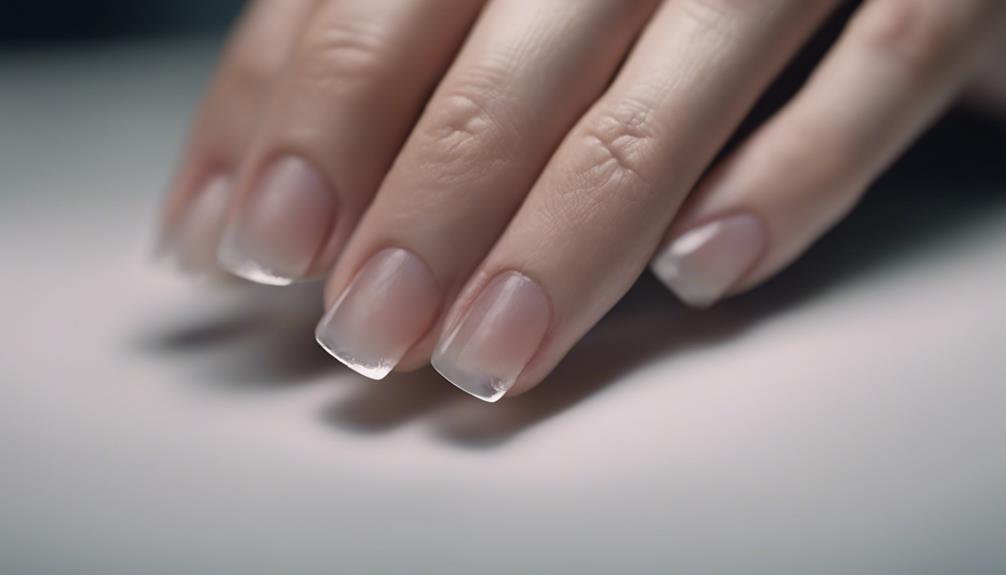
When ensuring the proper adhesion of press-on nails, one factor that significantly influences their longevity is the utilization of a topcoat. Applying a topcoat not only enhances the durability of press-on nails but also provides a glossy finish that elevates the overall look. The topcoat acts as a protective layer, shielding the press-on nails from daily wear and tear, such as water exposure and friction, which can cause them to loosen or lift prematurely.
To highlight the importance of using a topcoat, consider the following table showcasing the benefits of topcoat application:
| Topcoat Benefits | Application |
|---|---|
| Enhances durability | Apply a thin, even layer over the press-on nails once they are applied. |
| Provides a glossy finish | Allow the topcoat to dry completely to achieve a shiny and polished look. |
| Protects against daily wear | Reapply the topcoat every few days to maintain the protective layer. |
While topcoats are widely recommended, some individuals may prefer alternatives for various reasons. Exploring topcoat alternatives can offer unique benefits such as increased flexibility or nail health.
Frequently Asked Questions
Can Press on Nails Be Reused After They Have Fallen Off?
Press on nails can be reused after falling off with proper nail care. Reapplication requires thorough nail prep and proper storage to maintain adhesive quality. By following these steps, you can enjoy longer-lasting press-on nails.
Is It Safe to Apply Press on Nails on Top of Gel or Acrylic Nails?
When considering the compatibility of press-on nails with gel or acrylic nails, prioritize nail health. Applying press-ons over these enhancements may pose risks, impacting durability. Regular maintenance and proper application techniques are crucial for a successful and safe outcome.
How Long Do Press on Nails Typically Last Before Needing to Be Replaced?
Press on nails durability varies depending on application technique and daily activities. Generally, they can last 1-2 weeks with proper maintenance. To extend wear time, avoid excessive water exposure and use nail glue for reapplication as needed.
Can Press on Nails Be Easily Removed Without Damaging Natural Nails?
Press on nails can be easily removed by soaking them in warm, soapy water to loosen the adhesive. Gently peel them off to prevent damage to natural nails. Prioritize nail health by moisturizing and allowing nails to breathe between applications.
Are There Any Tips for Making Press on Nails Last Longer, Aside From Proper Application Techniques?
Enhancing the longevity of press-on nails involves meticulous nail care routines and exploring advanced adhesive options. Incorporating nail fortifying treatments and experimenting with specialized adhesives can significantly contribute to the durability and longevity of press-on nails.
Conclusion
In conclusion, the reasons why press on nails may not stick include:
- Improper nail preparation
- Low-quality adhesive
- Incorrect nail size
- Oily nail beds
- Short application time
- Excessive hand washing
- Incompatible nail shapes
- Lack of topcoat usage
It is important to address these factors to ensure long-lasting press on nail adhesion.
Did you know that on average, women spend over $400 a year on nail services? This statistic highlights the importance of proper nail care and maintenance.

